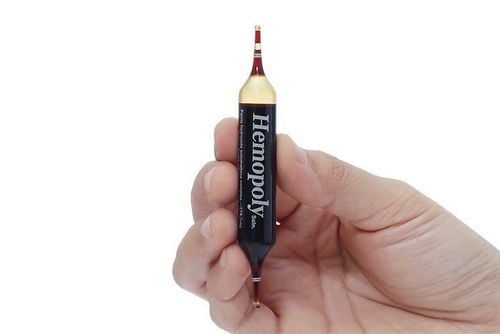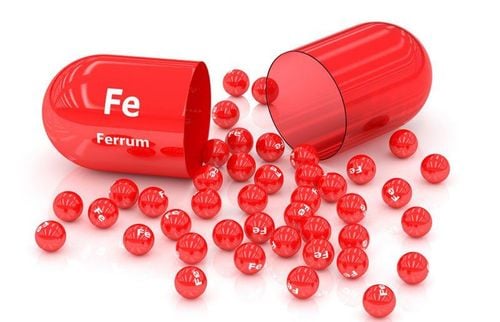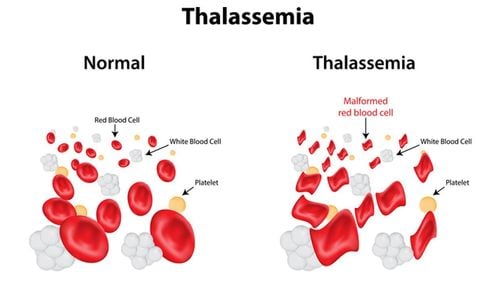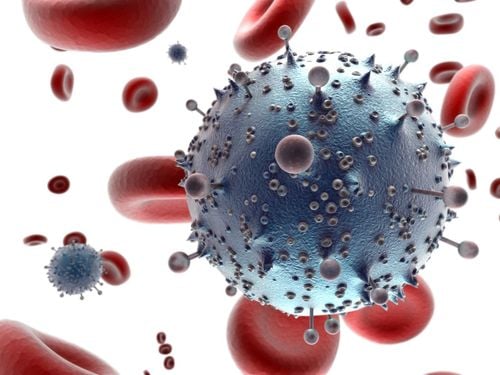This is an automatically translated article.
The article was professionally consulted with Master, Doctor Pham Thi Thuy Nhung - Head of Laboratory Department - Laboratory Department - Vinmec Hai Phong International General Hospital.The reticulocyte test is one of the blood tests that can reflect the level of production in the bone marrow.
1. Reticulocyte test
Reticulocytes are the body's own blood cells, also known as immature red blood cells, which are released from the bone marrow to the peripheral blood. The presence of reticulocytes indicates that the ability to make hematopoietic cells, or more precisely, to make red blood cells in the blood is still functioning well, from which it can be concluded that the bone marrow responds well to the presence of red blood cells. Anemia occurs in the human body.Peripheral reticulocytes can be identified by staining with methylene blue or Cresyl blue, which will result in a fine RNA stain in the cytoplasm of this young erythrocyte. Since reticulocytes are an intermediate stage of development between nucleated and mature erythrocytes, they only last about 2 days before maturing and developing into mature erythrocytes.
A reticulocyte test is a type of blood test in which the production of red blood cells can be examined and the function of the bone marrow is normal or abnormal. This type of blood test is often ordered in patients experiencing anemia. Calculating the reticulocyte count in this type of test often contributes to the diagnosis of certain conditions. If the number of reticulocytes is increased, it is possible that the patient is experiencing a lot of blood loss or diseases where red blood cells are destroyed very early, such as hemolytic anemia.
Besides, the reticulocyte test helps treating doctors to guide the next type of test to be performed on the patient to diagnose more specifically and more accurately anemia diseases. More specifically, patients with low reticulocyte counts are often ordered to have a bone marrow biopsy to investigate the activity of cells in the bone marrow. The reticulocyte test also helps to evaluate the effectiveness of anemia treatment, thereby adjusting it to suit the patient.
Some factors can affect the results of reticulocyte tests, which are:
The patient is taking some drugs that affect the blood test results such as Parkinson's disease drugs, drugs used in the disease. Rheumatoid arthritis patients, drugs to treat diseases such as fever, malaria, cancer chemotherapy... The patient has to undergo radiation therapy The patient is taking the antibiotic Sulphonamide. The patient's blood test during pregnancy also affects the test results. The patient had a history of blood transfusion in the immediate vicinity of the blood test.
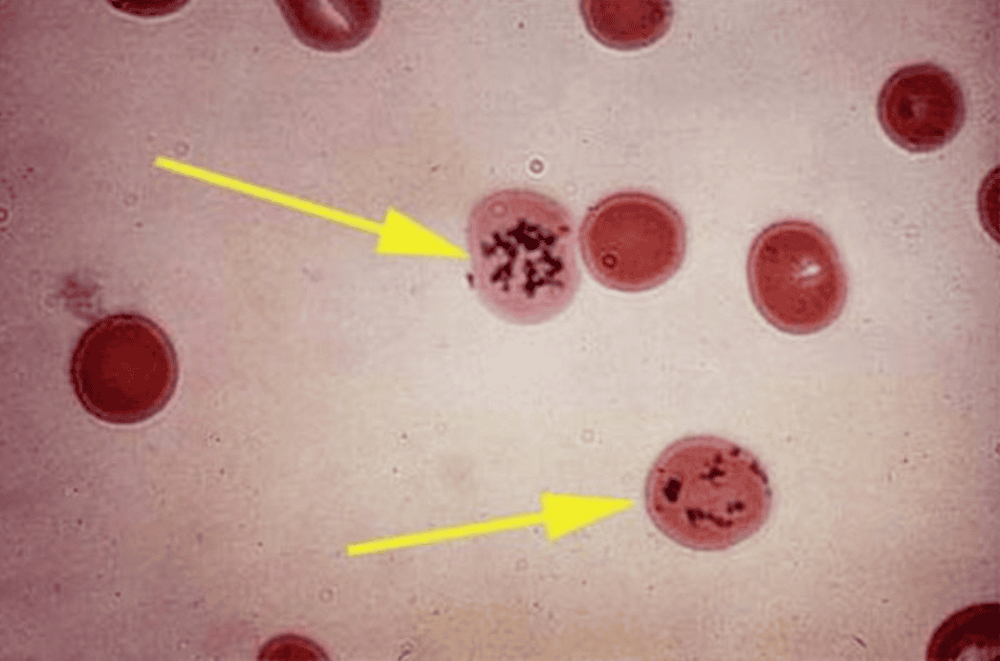
2. Calculate reticulocyte count
The way to calculate the reticulocyte count is the same as when analyzing red blood cells in a blood test. After taking blood samples, the reticulocytes will be stained with Nucleic acid, also known as Oxazine 750, to evaluate the ability to absorb this dye on a 670mm diode laser light source. Then, the results will be compared with the content and size of the hemoglobin cells of the reticulocytes.Some indicators when doing a reticulocyte test we can get as follows:
Retic (Reticulocyte): The absolute number and percentage of reticulocytes compared to the total number of red blood cells in the blood. The symbol for reticulocytes is RET. CHr: Hemoglobin content in reticulocytes. MCVr: mean volume of reticulocytes CHCMr: mean hemoglobin concentration of reticulocytes
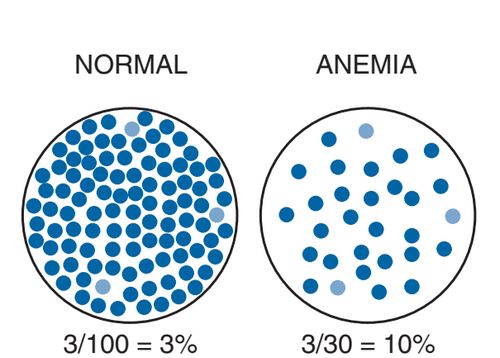
CRC = (Percentage of reticulocyte disease). X HCT Patient) / Normal value of HCT
Where:
Hct.patient: patient's red blood cell volume in % Hct normal: normal value of Hct, for men 45% and women is 40%. If this CRC corrected reticulocyte index is ≥ 3%, then the patient's bone marrow is now responding well to anemia, which means that red blood cell production is taking place normally. If the CRC is < 3%, the bone marrow does not respond well to anemia in the patient or in other words, red blood cell production does not take place normally.
The reticulocyte test is a basic blood test that is required to calculate the increase or decrease in the number of reticulocytes, thereby making initial judgments about the bone marrow's ability to produce blood cells. have abnormal problems or not so that they can contribute to the diagnosis of related hematological diseases or guide further laboratory tests for diagnosis and treatment.
Please dial HOTLINE for more information or register for an appointment HERE. Download MyVinmec app to make appointments faster and to manage your bookings easily.





